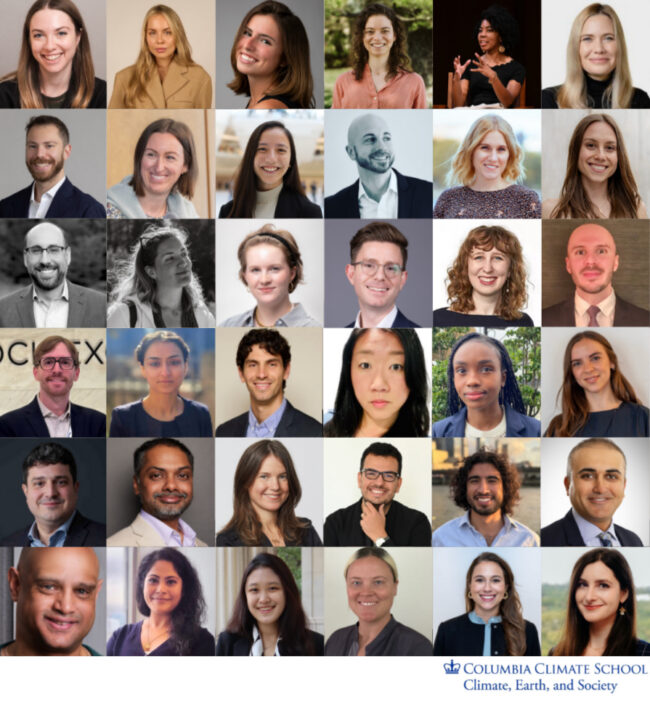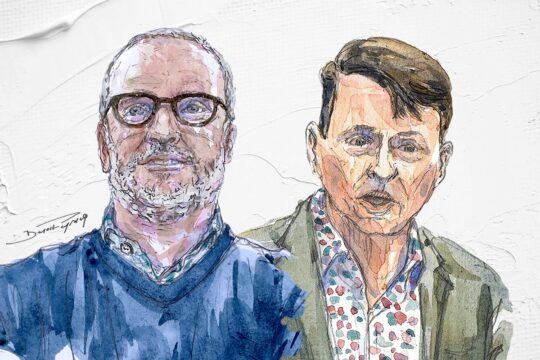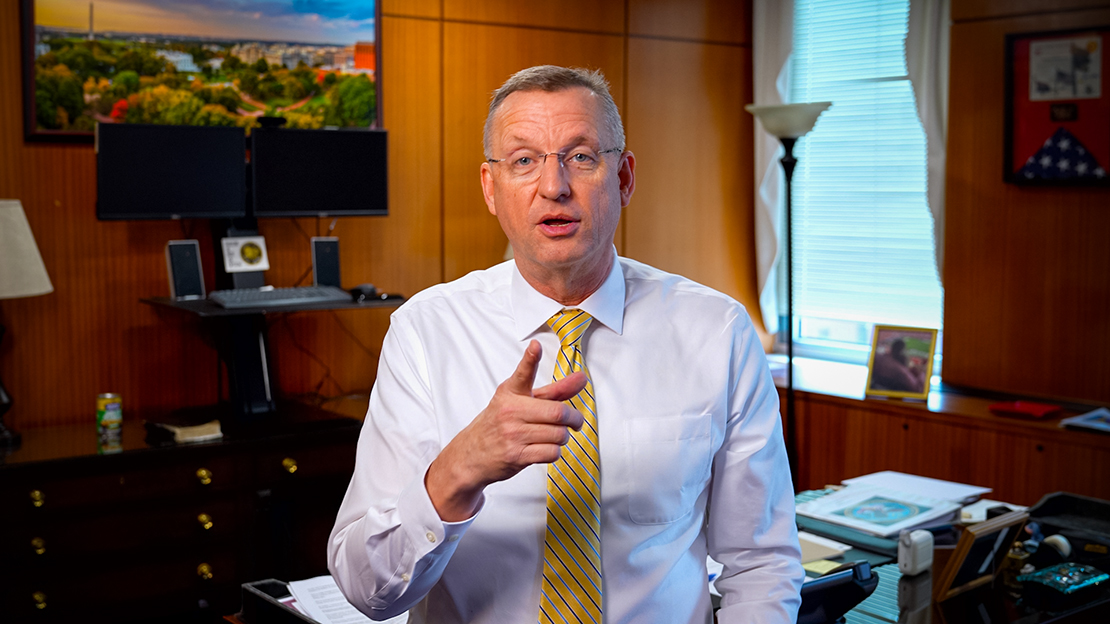Columbia Climate School Hosts 10th Annual Sustainability Careers Reception – Columbia University

Report on the 10th Annual Sustainability Careers Reception
Executive Summary
On October 24, the Columbia Climate School hosted its 10th annual Sustainability Careers Reception, uniting 36 professionals with over 100 students. The event served as a critical platform for advancing the United Nations Sustainable Development Goals (SDGs) by fostering dialogue and building professional capacity. Discussions centered on the interdisciplinary skills required to drive progress on key objectives, including SDG 13 (Climate Action), SDG 11 (Sustainable Cities and Communities), and SDG 17 (Partnerships for the Goals). The reception successfully connected emerging leaders with established practitioners, mapping career pathways that directly contribute to a sustainable global future.
Event Overview and Strategic Alignment with SDGs
Event Details
- Event: 10th Annual Sustainability Careers Reception
- Host: Columbia Climate School
- Date: October 24
- Location: Penn Club, Midtown Manhattan
- Participants: 36 professionals and over 100 students from eight partner programs.
Core Objective: Fostering a Workforce for Sustainable Development
The primary objective of the reception was to bridge the gap between academic training and professional practice in the sustainability sector. By facilitating direct engagement, the event aimed to equip the next generation of leaders with the insights and networks needed to implement the SDGs. The format, featuring intimate roundtable discussions, was specifically designed to encourage deep collaboration, a cornerstone of SDG 17 (Partnerships for the Goals).
Cross-Sector Collaboration: A Framework for SDG 17
Diverse Sector Representation
The event exemplified SDG 17 by convening stakeholders from a wide array of sectors essential for sustainable development. This multi-stakeholder partnership included representatives from:
- Finance: BNY, Jennison Associates, JPMorgan Chase
- Government and Public Sector: NYC Mayor’s Office of Climate & Environmental Justice, NYSERDA, New York Power Authority
- Non-Profit and Advocacy: Natural Resources Defense Council (NRDC), Rocky Mountain Institute (RMI), Rockefeller Brothers Fund
- Corporate Sustainability and Consulting: FedEx, JLL, Capgemini, PwC
- Energy: Brookfield Renewable, Solar Landscape
Thematic Discussions on Integrated SDG Implementation
Conversations during the reception highlighted the interconnected nature of the SDGs, demonstrating how progress in one area supports others. Practitioners from different fields explored integrated solutions that address climate action through finance, policy, and technology.
Focus on Key Sustainable Development Goals
SDG 11 & SDG 9: Sustainable Cities, Communities, and Infrastructure
A significant portion of the dialogue was dedicated to building resilient and sustainable urban environments. Key topics included:
- Modernizing public infrastructure to be stronger, safer, and more climate-resilient.
- Improving building performance and executing retrofits to reduce urban carbon footprints.
- Implementing city and state programs that translate sustainability plans into tangible projects, directly contributing to SDG 11 and SDG 9.
SDG 13, SDG 7, & SDG 12: Climate Action, Clean Energy, and Responsible Production
The core theme of the event was climate action, with discussions spanning multiple goals:
- Climate Action (SDG 13): Professionals from advocacy groups like the NRDC and RMI discussed policy and philanthropic strategies to accelerate climate mitigation and adaptation.
- Affordable and Clean Energy (SDG 7): The acceleration of the clean energy transition was a central topic, with experts discussing renewable energy projects and policy.
- Responsible Consumption and Production (SDG 12): Corporate representatives, such as the lead from FedEx, detailed efforts to create sustainable supply chains and operations.
SDG 4 & SDG 8: Quality Education and Decent Work
The reception directly supported SDG 4 by providing a unique educational and professional development opportunity. It prepared students for careers that advance SDG 8 by promoting decent work within the growing green economy. Practitioner advice emphasized the need for specific competencies:
- Interdisciplinary Fluency: The ability to integrate science, policy, finance, and communications.
- Translational Skills: The capacity to turn complex data into actionable strategy and policy.
- Collaborative Mindset: A commitment to working across sectors to achieve common goals.
Conclusion and Future Outlook
The 10th Annual Sustainability Careers Reception successfully demonstrated the power of partnership in advancing the Sustainable Development Goals. It provided students with a clearer understanding of how their academic pursuits can translate into impactful careers that address urgent global challenges. The event underscored that the future of climate and sustainability work lies in integrated, cross-sector efforts. The Climate School’s ongoing professional development programs, including the upcoming Career Expo, will continue to build this critical human capital, ensuring a pipeline of leaders ready to implement the 2030 Agenda for Sustainable Development.
Analysis of Sustainable Development Goals in the Article
1. Which SDGs are addressed or connected to the issues highlighted in the article?
The article discusses a sustainability careers reception, highlighting the intersection of education, professional development, and cross-sector collaboration to address climate and sustainability challenges. The following SDGs are connected to these themes:
- SDG 4: Quality Education: The article is centered around an event hosted by the Columbia Climate School for students in its various sustainability-focused educational programs. It emphasizes skill-building and preparing a new generation of professionals.
- SDG 7: Affordable and Clean Energy: The text mentions the “clean energy transition” and the presence of professionals from organizations like the New York Power Authority and Brookfield Renewable, directly linking to the shift towards sustainable energy sources.
- SDG 8: Decent Work and Economic Growth: The core purpose of the event is to connect students with career opportunities in the growing sustainability sector, promoting employment in green industries.
- SDG 9: Industry, Innovation, and Infrastructure: The article explicitly discusses modernizing infrastructure to be more resilient and sustainable, mentioning “Roads, bridges, airports, parks, the electric grid,” and “building performance and retrofits.”
- SDG 11: Sustainable Cities and Communities: The role of cities as “major climate employers” is highlighted, along with the work of the NYC Mayor’s Office of Climate and Environmental Justice in making urban infrastructure resilient.
- SDG 13: Climate Action: The entire context of the article, from the Climate School hosting the event to the focus on climate-related careers and projects, is about taking action to combat climate change and its impacts.
- SDG 17: Partnerships for the Goals: The event itself is a model of partnership, bringing together academia, students, private sector companies (BNY, FedEx), government bodies (NYC Mayor’s Office, NYSERDA), and non-profits (NRDC, RMI) to achieve common sustainability goals.
2. What specific targets under those SDGs can be identified based on the article’s content?
Based on the specific discussions and activities described, the following targets can be identified:
- Target 4.7: “By 2030, ensure that all learners acquire the knowledge and skills needed to promote sustainable development…” The article details how the Columbia Climate School’s programs and the careers reception aim to equip students with interdisciplinary skills (“translate between engineering and policy, finance and community needs”) for careers in sustainability.
- Target 7.2: “By 2030, increase substantially the share of renewable energy in the global energy mix.” The mention of the “clean energy transition” and the participation of professionals from renewable energy firms points directly to efforts supporting this target.
- Target 8.5: “By 2030, achieve full and productive employment and decent work for all…” The event’s focus on “Sustainability Careers” and connecting over 100 students with professionals from various sectors is a direct effort to promote employment in the green economy.
- Target 9.1: “Develop quality, reliable, sustainable and resilient infrastructure…” The quote from the NYC Mayor’s Office of Climate and Environmental Justice about “modernizing infrastructure to make it stronger and safer for decades to come” and “more resilient and sustainable” directly aligns with this target.
- Target 11.b: “By 2020, substantially increase the number of cities and human settlements adopting and implementing integrated policies and plans towards… mitigation and adaptation to climate change, resilience to disasters…” The article describes how city and state programs in New York “move projects from plan to delivery,” reflecting the implementation of climate-focused urban policies.
- Target 13.3: “Improve education, awareness-raising and human and institutional capacity on climate change mitigation, adaptation, impact reduction and early warning.” The reception serves as a platform for education and capacity building, connecting current students (the “new generation of climate leaders”) with experienced practitioners to enhance their understanding and readiness to enter the field.
- Target 17.17: “Encourage and promote effective public, public-private and civil society partnerships…” The event’s structure, which unites students, academic institutions, financial services companies, government offices, and advocacy groups, is a clear example of a multi-stakeholder partnership in action.
3. Are there any indicators mentioned or implied in the article that can be used to measure progress towards the identified targets?
While the article does not provide quantitative data, it mentions or implies several qualitative and quantitative indicators that could be used to measure progress:
- Indicator for Target 4.7: The existence and variety of specialized educational programs are mentioned (“the Climate School’s eight educational partner programs”). A measurable indicator is the number of higher education programs focused on sustainability and climate science.
- Indicator for Target 8.5: The article provides numbers for the event’s attendance (“36 professionals and over 100 Columbia students”). This suggests an indicator such as the number of networking and career development opportunities provided for students in the sustainability sector.
- Indicator for Target 9.1: The discussion of “building performance and retrofits” and modernizing infrastructure implies progress could be measured by the number and scale of sustainable infrastructure projects undertaken by city and state agencies.
- Indicator for Target 13.3: The event itself is an indicator of capacity-building efforts. Progress can be measured by the number of participants in climate-related professional development and educational events.
- Indicator for Target 17.17: The article lists a diverse group of participating organizations from the private sector, government, and non-profits. An indicator is the number and diversity of sectors represented in partnerships for sustainability.
4. Table of SDGs, Targets, and Indicators
| SDGs | Targets | Indicators (Identified or Implied in the Article) |
|---|---|---|
| SDG 4: Quality Education | 4.7: Ensure all learners acquire knowledge and skills for sustainable development. | The number of specialized educational programs in sustainability (e.g., the eight programs mentioned at the Climate School). |
| SDG 7: Affordable and Clean Energy | 7.2: Increase the share of renewable energy. | Engagement of professionals and companies from the renewable energy sector in career development and transition initiatives. |
| SDG 8: Decent Work and Economic Growth | 8.5: Achieve full and productive employment and decent work. | Number of students and professionals participating in sustainability-focused career events (e.g., “36 professionals and over 100 Columbia students”). |
| SDG 9: Industry, Innovation and Infrastructure | 9.1: Develop quality, reliable, sustainable and resilient infrastructure. | Implementation of projects focused on modernizing and retrofitting infrastructure (e.g., roads, bridges, buildings) for resilience and sustainability. |
| SDG 11: Sustainable Cities and Communities | 11.b: Implement integrated policies and plans for climate change mitigation and adaptation. | The existence of city and state programs that move climate resilience projects from planning to delivery. |
| SDG 13: Climate Action | 13.3: Improve education, awareness-raising and human and institutional capacity on climate change. | The number of events and initiatives that connect students with professionals to build capacity for climate action. |
| SDG 17: Partnerships for the Goals | 17.17: Encourage and promote effective public, public-private and civil society partnerships. | The number and diversity of sectors (academia, private firms, government, non-profits) collaborating on sustainability initiatives. |
Source: news.climate.columbia.edu
What is Your Reaction?
 Like
0
Like
0
 Dislike
0
Dislike
0
 Love
0
Love
0
 Funny
0
Funny
0
 Angry
0
Angry
0
 Sad
0
Sad
0
 Wow
0
Wow
0
















































/environment-climate-change-and-health-(ech)/water-sanitation-hygiene-and-health-(wsh)/landfill-tuvalu-36092.tmb-1200v.jpg?sfvrsn=5c21fe40_1#)

.jpg.webp?itok=0ZsAnae9#)

























